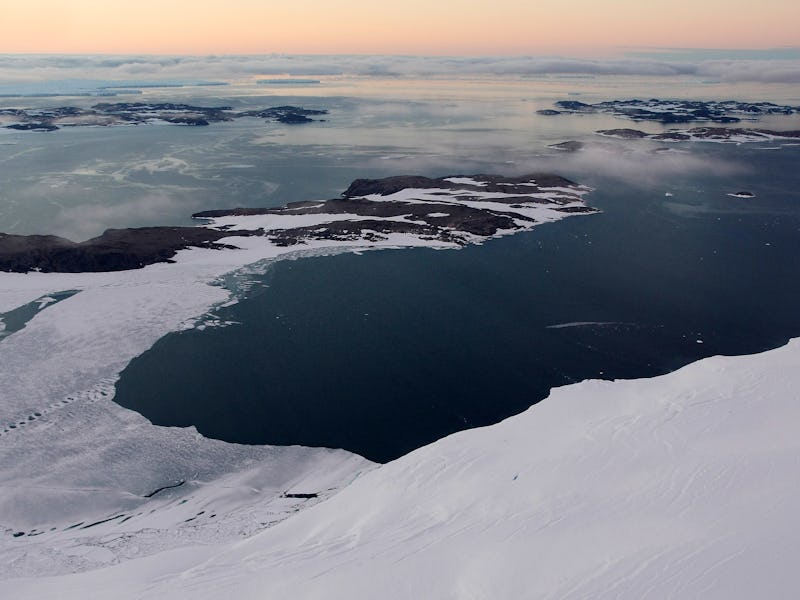Scientists Are Traversing Antartica and You Can Follow Along on Instagram
They're driving tractors and snowmobiles over the world's largest ice shelf to research global warming.

The weather conditions were awful — wind and snow flurries made for low visibility. The expedition had slowed. But the members of the Ross Ice Shelf Programme continued to be in good spirits.
“Our current location,” they sent from the field. “Weather is bad but everyone is well and we are having a great time.” Social media etiquette suggests an exclamation point might’ve been more convincing, but under the circumstances, who wants to touch a shift key?
This message was posted yesterday to the Instagram: “the_ross_ice_shelf_programme. If you ever wanted a close look at exactly what goes down on a epic Antartica research expedition take a gander:”
The undertaking, funded by the New Zealand Antarctic Research Institute, is a team effort to better understand how the Ross Ice Shelf will respond to global warming. The RIS acts as an interface between the West Antarctic Ice Sheet and the ocean. When the RIS is affected by climate change it in turn weakens the WAIS. If the WAIS were to collapse, global sea levels would rise.
“We know that the past climate warming caused ice shelf and ice sheet retreat in the Ross Sea,” research leader Professor Christina Hulbe said in a news release. “Now we need to find out more about the actual physical processes and the rates at which they act in the past.”
“That knowledge is one of the keys to making better projections of future change.”
The current Antartica expedition is one part of an four-year program. The group recently made land at their field site in a central region of the RIS, about 217 miles from Scott Base. This field site is off the path from the usual — if “usual” can be used here — path to the South Pole, and into largely unexplored territory. The party will use a radar to study the interaction between the RIS ice base and the underlying ocean, while also using a “thumper” to give a sound source for acoustic-based imaging of the seafloor and its sediment layers. These techniques will help the team reconstruct the history of the France-sized ice shelf.
Going through the Instagram posts is a real delight. There should be more continuing over the next week or so.
You get a look at pre-departure training:
Travels from New Zealand to Scott Base in Antartica:
A look at gear and sled preparation:
And constant updates from the field:
While conducting research, the team will also begin working on a snow airstrip that will help them have easier access to the site when they return next year.
Inverse will be following along their journey, after being pointed to the account when we spoke with Dr. Christian Ohneiser (a researcher on this expedition) about his research solving the mysteries around the Messinian Salinity Crisis. Sure beats dogsbeingbasic, if only by a nose.